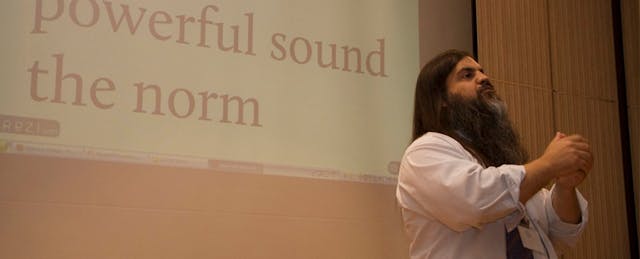This semester I’m teaching a graduate seminar on education and technology for Georgetown University. Over the next two months, I’ll share the experience and highlights in a series of columns for EdSurge with highlights from the course.
When teaching a course on edtech, it’s logical to start with a look at how professors can select the best tech tools for their courses. That choice has gotten both easier and more complicated (and challenging) in recent years.
On the one hand, we have more tools to choose from, and many services have gotten easier to use (think of the shift from wiki markup to Google Docs, or from separate video cameras and editing suites to all-in-one apps on smartphones).
On the other, many people are increasingly nervous about some digital platforms and their implications for students—and even on democracy itself. A rising sense of academia in crisis further complicates our practice. Meanwhile, online and hybrid learning keep growing and developing.
For my course on Studies in Educational Technology, I wanted to bring all of that in as objects of study—as well as discuss practical decisions for our collective learning experience. I also wanted to draw on my experience as an ed tech practitioner since the early 1990s.
I wanted students to study edtech while using it, so every week will feature some hands-on work. In addition, we’ll use some of those tools to make the class happen.
I created a tech catalog for students to explore and choose from, partially based on Georgetown’s enterprise suite, including a learning management system (Canvas), blogging (WordPress or other), student-run web domains, web annotation (Hypothesis), collaborative writing (Google Suite), discussion boards (Discourse), and videoconferencing (Zoom).
Like most of my classes, I try to make it an experiment in democracy. I believe in students owning as much of the class as possible, so at the outset we collectively determined which technologies to use. We also generated some class policies together, including privacy and discussion norms. In April the students will shape two weeks of the class, including materials, class structure, and pedagogy.
The students took class democracy seriously, which delighted me. They debated technology options carefully and thoughtfully, weighing multiple issues and affordances before settling on holding most class work in Canvas. They asked for more information and clarifications about some of the tech I presented, such as introductions to Hypothesis and Discourse. They hashed out what they wanted from a class LMS—structuring much of the discussion board chronologically rather than topically, for example. We came up with related policies together, including protocols for my writing this very column.
Our touchpoint as we began was Neil Selwyn’s excellent Education and Technology: Key Issues and Debates. This began with theoretical and historical questions: what is educational technology, and how did it change over time? For that matter, what is technology?
We observed that the problem of how to adopt or adapt tech to teaching is not a new one, and that we can learn from historical cases. After all, plenty of analog technologies have changed learning, including the chalkboard and the printed book. We also embedded specific hardware and software in broader frameworks and networks, using, for example, Heidegger’s notion of “enframing,” where a given technology is best understood as a combination of multiple entities, forces and institutions gathered to express an aspect of reality.
Selwyn’s essay also led us to discuss some of the most popular teaching models out there, such as the one we’re using for this course, constructivism. The students were also drawn to another pedagogy we talked about, connectivism, which emphasizes learner-driven, network-based learning. That led me to introduce them to Vannevar Bush’s enormously important 1945 essay “As We May Think,” which pretty much invented the idea of hypertext.
So as you see we began by backing up to the core of what is tech, what is good teaching and how can they truly work in tandem. Various aspects of social justice also arose, including inequalities of access to digital educational content and accessibility/disability issues. Students were concerned about the ways technology can repeat, accentuate or reduce social inequities.
It’s just the first step in a semester that will cover open learning, digital literacy, mobile, gaming, Augmented Reality and Virtual Reality—and more. But it seemed important to make the first step of choosing tech a careful and thoughtful one.


